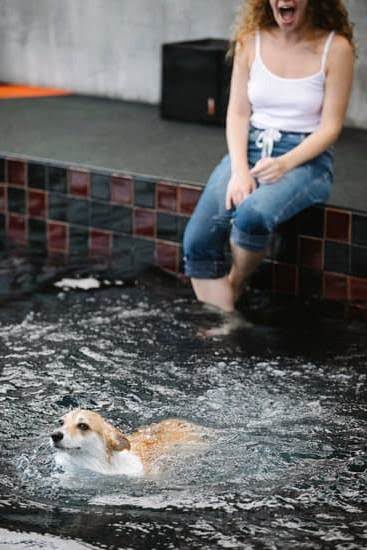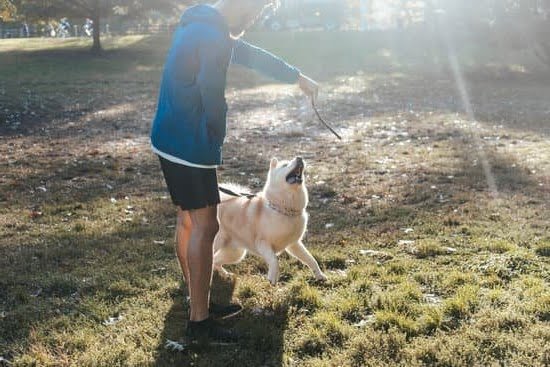Dogs bolting can be a terrifying and dangerous experience for both the dog and their owners. When a beloved pet suddenly takes off, ignoring all commands and racing away, it can leave us feeling helpless and anxious. That’s why recall training is crucial for every dog owner. Being able to call your dog back to safety could potentially save their life in unpredictable situations.
Understanding why dogs bolt and identifying triggering factors is the first step towards preventing this behavior. Whether it’s fear, excitement, or simply a distraction that leads dogs to bolt, recognizing these factors allows us to address them proactively before they turn into potential dangers.
Building a strong foundation of recall training is essential in order to teach your dog the “come” command reliably. By establishing this fundamental skill early on, you’ll not only enhance your control over your dog but also strengthen the bond between you and your furry companion.
In this article, we will delve into the dangers of dogs bolting and highlight the importance of recall training. We will explore common triggering factors behind bolting behavior and discuss ways in which you can identify them.
Additionally, we will provide step-by-step guides on teaching a reliable recall, utilizing positive reinforcement techniques, correcting bolt behavior effectively, and selecting essential training equipment. By addressing common challenges in recall training and stressing the significance of consistent practice, we aim to help every dog owner establish a dependable recall command for their beloved canine friends.
Delving into the Root Cause
Dogs bolting, or running away suddenly and without control, can be a frightening and dangerous behavior. Understanding why dogs bolt and identifying the triggering factors is crucial in preventing this behavior and keeping our furry friends safe.
There are several reasons why dogs may bolt. One common reason is fear or anxiety. If a dog feels threatened or scared, their instinct may be to run away to escape from the perceived danger. Other dogs may bolt out of excitement or curiosity, especially if they see something intriguing or unfamiliar. Some dogs may also bolt due to a lack of mental and physical stimulation, as they seek out new experiences or adventures.
To successfully address bolting behavior, it is important to identify the triggering factors for your specific dog. This requires careful observation of their behavior in different situations. Consider when your dog tends to bolt – is it during walks in crowded areas? When encountering certain stimuli like loud noises or other animals? By pinpointing these triggers, you can better understand what prompts your dog to bolt and take appropriate measures to prevent it.
| Triggers | Preventive Measures |
|---|---|
| Fear/Anxiety | Avoiding triggering situations, desensitization training, providing a safe space |
| Excitement/Curiosity | Maintaining a calm environment, redirecting focus with toys or treats, teaching impulse control |
| Lack of Stimulation | Providing regular exercise and mental enrichment activities, ensuring proper socialization |
Once you have identified the triggering factors for your dog’s bolting behavior, you can work on addressing them through training and management techniques. For example, if your dog bolts out of fear or anxiety, gradually exposing them to the trigger while providing positive reinforcement can help desensitize them and build their confidence.
If your dog bolts out of excitement, redirecting their focus with toys or treats can be helpful in keeping them engaged and preventing bolting. Additionally, ensuring your dog gets enough physical exercise and mental stimulation can reduce the likelihood of them seeking out opportunities to bolt.
By delving into the root cause of why dogs bolt and understanding the triggering factors for your specific dog, you can take proactive measures to prevent this behavior. Through training, management techniques, and providing appropriate mental and physical stimulation, you can create a safe environment for your dog and promote their overall well-being.
The Basics of Recall Training
Recall training is a vital aspect of owning a dog, especially for those prone to bolting. Establishing a strong foundation for the “come” command is crucial in ensuring the safety of your furry friend. This section will delve into the basics of recall training and provide guidance on how to effectively establish a strong foundation for this essential command.
To begin recall training, it is important to create an environment that encourages success. Start in a quiet and familiar space with minimal distractions. Ensuring that you have your dog’s attention before giving the command is key. Make eye contact or use their name to grab their focus, then give a clear and distinct verbal cue such as “come” or “here”.
Once you have their attention, encourage them to come towards you by using positive reinforcement techniques. These can include using food treats, toys, or enthusiastic praise as rewards. As they make their way towards you, maintain an upbeat and inviting tone to entice them further. When they reach you, reward them promptly and generously with lots of praise and treats.
To solidify the association between the “come” command and coming towards you, repetition is key. Practice recall training sessions regularly throughout the day in short bursts. Gradually increase the distance from which you call your dog and introduce mild distractions in controlled environments. This will help reinforce their understanding of the command while building their confidence and reliability.
In summary, establishing a solid foundation for recall training is essential when it comes to preventing dogs from bolting. Begin in a distraction-free environment with clear verbal cues and positive reinforcement techniques to encourage your dog to come towards you. Consistent practice and gradual increases in distance and distractions will help solidify this behavior over time, establishing a reliable recall command that can save your dog from potential danger even after bolting occurs.
Step-by-Step Guide to Teaching a Reliable Recall
Introduction to Recall Training
Recall training is a vital aspect of dog ownership, especially for dogs that have a tendency to bolt. The “come” command can be a life-saving tool, preventing accidents and keeping your dog safe in various situations. However, teaching a reliable recall requires patience, consistency, and a systematic approach. In this section, we will provide you with a step-by-step guide to help you train your dog to come after bolting.
Start with Basic Commands
Before diving into recall training, it’s crucial to ensure that your dog understands basic commands such as sit, stay, and heel. These commands lay the foundation for successful recall training. Use positive reinforcement techniques like treats or praise to reward your dog for following these basic commands consistently.
Once your dog has mastered the basics, begin incorporating the “come” command into familiar environments with minimal distractions. Begin by simply saying “come” while gently pulling on the leash if necessary. Always ensure a positive experience by rewarding your dog with treats and praise when they respond correctly.
Gradually Increase Distance and Distractions
As your dog becomes more comfortable with the “come” command in controlled settings, you can start increasing the distance between you and your pet. Move further away from them while repeating the command. Be patient and avoid rushing this process – it’s important not to overwhelm them with too much too soon.
Similarly, gradually introduce distractions into the training sessions. Start by practicing in moderately distracting environments such as a quiet park before progressing to areas where there are more stimuli like other dogs or people running around. Remember to maintain consistent rewards and reinforcement for correct responses even as distractions increase.
By systematically building up distance and distractions over time, you can train your dog to reliably come even in challenging situations. However, keep in mind that each dog learns at their own pace, so be patient and adapt your training plan accordingly.
Utilizing Positive Reinforcement Techniques
Positive reinforcement is a powerful tool when it comes to training dogs, and it is particularly effective in strengthening the recall behavior. By utilizing reward-based training methods, you can encourage and reinforce your dog’s desire to come when called, even after bolting.
The key to using positive reinforcement effectively is to use rewards that are highly motivating for your dog. This could be a favorite toy, a special treat, or even just enthusiastic praise and affection. The important thing is that the reward is something your dog finds valuable and will work for.
When training your dog to come after bolting, it’s important to start in a controlled and low distraction environment. Begin by calling your dog’s name, followed by the “come” command in a happy and inviting tone of voice. As soon as your dog starts coming towards you, reward them immediately with the chosen reward.
To strengthen the recall behavior further, gradually increase the distance between you and your dog as well as the level of distractions present during training sessions. Start by practicing in a quiet room or backyard and then progress to more challenging environments such as a park or busy street.
It’s also helpful to have multiple short training sessions throughout the day rather than one long session. This helps keep the training fun and prevents your dog from becoming bored or tired, which can hinder their progress.
By consistently rewarding your dog for coming when called, they will begin to associate the action with positive outcomes. Over time, this positive association will become stronger and make it more likely that they will come back to you reliably even after bolting.
| Positive Reinforcement Techniques | Benefits |
|---|---|
| Use of highly motivating rewards | Motivates dogs to come when called |
| Start in controlled and low distraction environments | Allows dogs to focus and learn effectively |
| Increase distance and distractions gradually | Strengthens recall behavior in various scenarios |
| Multiple short training sessions throughout the day | Maintains engagement and prevents boredom |
| Establish positive association with coming when called | Increases reliability even after bolting |
Correcting Bolt Behavior
Bolting behavior in dogs can be incredibly dangerous and can put both the dog and those around them at risk. It’s essential to correct this behavior as soon as possible to prevent it from becoming a habit. In this section, we will explore some effective strategies to tackle bolting head-on and provide you with the knowledge and tools to prevent it from happening in the first place.
- Leash Training: One of the most effective strategies for correcting bolt behavior is proper leash training. Teaching your dog to walk calmly on a leash will not only prevent them from bolting, but it will also give you better control if they do decide to run off. Start with short walks in quiet areas and gradually increase the distance and distractions as your dog becomes more comfortable.
- Recall Games: Engaging in recall games with your dog can be a fun way to reinforce their recall training while also strengthening your bond. One popular game is hide-and-seek, where you hide from your dog, call their name, and reward them when they find you. This game helps them associate the “come” command with positive experiences.
- Identify Triggers: Understanding what triggers your dog’s bolting behavior is crucial in preventing it from happening again. Some common triggers include loud noises, unfamiliar environments, or encountering other animals. Once you identify these triggers, you can gradually expose your dog to them in a controlled manner, using positive reinforcement techniques to reinforce their recall skills.
- Create a Safe Environment: Bolting often occurs when dogs are anxious or feel unsafe in their surroundings. Make sure that your dog feels secure by creating a safe environment for them both inside and outside of your home. Providing plenty of mental and physical stimulation through regular exercise, interactive toys, and enrichment activities can help alleviate their anxiety and reduce the likelihood of bolting.
By implementing these strategies consistently and combining them with positive reinforcement techniques from previous sections, you can effectively correct and prevent bolt behavior in your dog. Remember, it’s essential to remain patient and persistent throughout the training process. With time and dedication, you can ensure a reliable recall from your dog in any situation.
Essential Training Equipment
Choosing the Right Equipment
When it comes to recall training and preventing dogs from bolting, having the right equipment can make a significant difference. Here are some essential tools and accessories that can aid in recall training and ensure the safety of your dog:
Long Line or Training Lead
A long line or training lead is a valuable tool for recall training, especially when working on distance and distractions. It allows you to give your dog more freedom while still maintaining control. Choose a long line made of lightweight but durable material, preferably around 15-30 feet long. Remember to gradually increase the length as your dog becomes more reliable with their recall.
Treats and Rewards
Treats and rewards are essential for positive reinforcement during recall training. Use high-value treats that your dog finds irresistible, such as small pieces of cooked chicken or cheese. Make sure to keep these treats easily accessible, either in a treat bag attached to your belt or in a pocket designated for training sessions. Additionally, consider using other forms of rewards such as verbal praise or playtime with toys if your dog responds well to them.
Clicker
A clicker is a handy tool for marking desired behaviors during recall training. This small device emits a distinct sound that tells your dog they have done something right. Pair the clicker with treats or rewards so that your dog associates the sound with positive outcomes. Clickers are particularly helpful because they provide instant feedback, enabling accurate timing for reinforcing good behavior.
Collar and Harness Options
When it comes to choosing collars or harnesses for recall training, it’s important to consider your individual dog’s needs and preferences. Some dogs may benefit from a standard flat collar, while others may require a harness for better control and reduced strain on their necks.
Whichever option you choose, ensure that it fits properly and is comfortable for your dog to wear. Avoid choke or prong collars as they can cause harm and are not appropriate for recall training.
GPS Tracker
For added peace of mind, consider investing in a GPS tracker that can be attached to your dog’s collar or harness. These devices use GPS technology to track your dog’s location in real-time. In the event of a bolt or escape, you can quickly locate and retrieve your dog. Some trackers also offer additional features such as remote training capabilities or virtual boundaries to prevent bolting altogether.
By utilizing these essential training equipment and accessories, you can create a safe and productive environment for recall training. Remember to always prioritize the comfort and well-being of your dog when selecting any tools or accessories.
Continue reading: Troubleshooting Common Challenges: Addressing Setbacks and Overcoming Training Obstacles During the Recall Training Process.
Troubleshooting Common Challenges
Training a dog to come after bolting can sometimes present challenges and setbacks. It is important for dog owners to be prepared for these obstacles and have strategies in place to address them effectively. This section will provide some common challenges that may arise during recall training and offer tips on how to overcome them.
One common challenge that dog owners face during recall training is distractions. Dogs are naturally curious creatures, and their attention can easily be diverted by exciting stimuli in their environment such as other dogs, people, or interesting scents. To overcome this challenge, it is crucial to gradually expose your dog to distractions while reinforcing the “come” command.
Start with low-level distractions and gradually increase the difficulty as your dog becomes more reliable in coming when called. Use high-value rewards or treats to motivate your dog and keep their focus on you.
Another challenge that may occur during recall training is fear or anxiety. Some dogs may develop fear or anxiety related to recall if they have had negative experiences in the past, such as being scolded or punished after coming back. In such cases, it is important to rebuild your dog’s trust and confidence through positive reinforcement methods.
Use praise, treats, and toys to create a positive association with the recall command. Gradually increase the distance between you and your dog while providing positive reinforcement each time they successfully come back to you.
Additionally, some dogs may exhibit stubbornness or independence during recall training, making it difficult for them to consistently respond to the command. In these cases, it is essential not to resort to punishment or forceful techniques but instead focus on building a stronger bond with your dog through positive reinforcement.
Be patient and persistent in your training efforts, ensuring that each successful response is rewarded with praise or treats. Break down the training process into smaller steps if needed and gradually build up their reliability to come when called.
Consistency is Key
Once you have successfully trained your dog to come after bolting, it is essential to maintain and reinforce the recall behavior through consistent practice. Dogs thrive on routine, so incorporating daily training sessions into your dog’s schedule will help solidify their understanding of the “come” command and ensure that they respond reliably in any situation.
One important aspect of maintenance training is regularly reviewing the recall command in different environments and situations. Start by practicing in a familiar, low-distraction area such as your backyard. As your dog becomes more proficient, gradually introduce new environments with increasing distractions, such as parks or busy streets. This will help your dog generalize the recall behavior and respond effectively regardless of their surroundings.
It is important to note that consistency extends beyond training sessions. Incorporate the recall command into everyday interactions with your dog. For example, use it when calling them for mealtimes or before going on walks. By incorporating the recall command into daily routines, you reinforce its importance and encourage its consistent use.
In addition to regular practice, it is crucial to reward and reinforce your dog’s recall behavior consistently. Positive reinforcement techniques such as praise, treats, or playtime are effective tools for encouraging and strengthening the recall behavior. Be sure to reward your dog every time they come to you when called, especially during maintenance training. This will help them understand that coming when called is always a positive experience.
Remember that maintaining a reliable recall requires ongoing commitment from both you and your dog. Stay patient and persistent throughout the process as setbacks may occur from time to time. If your dog fails to come when called or starts exhibiting bolt-like behavior again, do not get discouraged; instead, revisit earlier steps in their training routine and address any underlying triggering factors.
By consistently practicing the recall command and reinforcing it through positive experiences, you can ensure that your dog responds reliably, even in challenging situations. The key is to make recall training a regular part of your dog’s life and to consistently motivate and reward their efforts. With time, patience, and ongoing practice, you can achieve a strong and dependable recall behavior that will keep your beloved pet safe and provide you with peace of mind in any situation.
Conclusion
In conclusion, training a dog to come after bolting is an essential skill that every dog owner should prioritize. Bolting can be dangerous and even life-threatening, but through recall training, owners can ensure their dogs’ safety and prevent potentially harmful situations. By understanding the root causes of bolting and identifying triggering factors, owners can address these issues and work towards a reliable recall command.
Throughout this training process, it is important to establish a strong foundation for the “come” command. Starting with basic commands and gradually increasing distance and distractions will help dogs understand the expectations and reinforce their training. Positive reinforcement techniques play a crucial role in recall training. Reward-based methods encourage dogs to engage in desired behaviors and strengthen the recall behavior over time.
To address bolting head-on, strategies must be implemented to correct this behavior effectively. Consistency is key in preventing bolting from becoming a habit. Implementing appropriate equipment such as long lines or harnesses can aid in recall training and keep dogs safe during the process.
While there may be setbacks or challenges along the way, patience, persistence, and positive reinforcement are vital. Celebrating each success, no matter how small, will motivate both the owner and the dog on their journey towards developing a reliable recall in any situation. Training requires ongoing maintenance and practice to ensure that dogs continue to respond positively to the recall command.
In summary, successfully training a dog to come after bolting requires commitment from both owner and dog. By prioritizing patience, persistence, and positive reinforcement throughout the training process, dog owners can celebrate their accomplishments as they create a safe environment for their furry friends.
Frequently Asked Questions
How do you break a dog from bolting?
Breaking a dog from bolting requires consistent training and reinforcement. One approach is to use a long leash or training lead so that you have control over the dog’s movement. Start by teaching the dog a solid recall command, such as “come” or “here,” using positive reinforcement techniques like treats and praise.
Gradually increase the distance between you and the dog over time, rewarding them for coming back to you when called. It’s important to be patient and understanding during this process, as sudden movements or punishments can reinforce the bolting behavior. Consistency in training and practicing recall in various environments will help break the habit of bolting.
How do I train my dog to come back when off the lead?
Training a dog to come back when off the lead takes time, patience, and gradual progression. Begin by establishing a strong foundation with basic obedience commands like sit and stay in a controlled environment before moving on to off-leash training. Use high-value treats or toys as rewards when your dog returns to you on command.
Initially, practice in a secure, fenced area where distractions are minimal. As your dog becomes more reliable with their recall, gradually introduce distractions and train in different environments with varying levels of difficulty. Being consistent with training, avoiding punishment-based methods, and providing ample positive reinforcement will encourage your dog to come back reliably off the lead.
How do you discipline a dog that doesn’t come when called?
Disciplining a dog that doesn’t come when called should focus on reinforcing desired behaviors rather than punishment for not obeying commands. Punishment can create fear or avoidance responses instead of building trust and reliability in recall. Start by assessing possible reasons why your dog is not responding; it could be due to lack of training, low motivation, or distractions in their environment. Work on reinforcing a solid recall through consistent positive reinforcement techniques such as treats, praise, or favorite toys whenever they do respond correctly to your call.
Avoid scolding or physical punishments as they might confuse or frighten your dog rather than motivate them to come when called. Training sessions should be short, frequent, and rewarding to create positive associations with coming when called. Gradually increase distractions as your dog shows improvement and only reinforce the behavior you desire.

Welcome to the blog! I am a professional dog trainer and have been working with dogs for many years. In this blog, I will be discussing various topics related to dog training, including tips, tricks, and advice. I hope you find this information helpful and informative. Thanks for reading!





